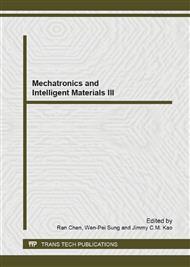p.78
p.82
p.85
p.90
p.95
p.99
p.103
p.108
p.113
Effects of the Mould Pressure and Mould Pressing Time on the Properties of Graphite/Phenolic Resin Composites
Abstract:
Polymer matrix composites made from phenolic resin are filled with natural graphite powders. They are fabricated by compression molding technique. The density, electrical conductivity and flexural strength of composite are analyzed to determine the influences of mould pressure and mould pressing time on the physical, electrical and mechanical properties of composite. It is found that the density, electrical conductivity and flexural strength of composites increased with increasing mould pressure. Under pressure of 40 MPa for 60 min, the density, electrical conductivity and flexural strength of composites were 1.85 g/cm3, 4.35 103 S/cm and 70 MPa, respectively. The decreased gaps could be the main reason for the increasing of density, electrical conductivity and flexural strength as mould pressure increases. The results also show that the density of composites increased with increasing mould pressing time.
Info:
Periodical:
Pages:
95-98
Citation:
Online since:
June 2013
Authors:
Price:
Сopyright:
© 2013 Trans Tech Publications Ltd. All Rights Reserved
Share:
Citation:


